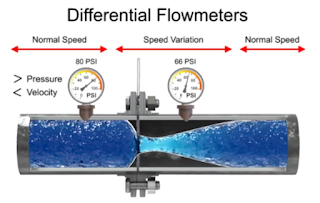 |
| Brooks Instrument and LabVIEW™ |
Brooks Instrument manufactures very high quality mass flow controllers. LabVIEW™ develops and licenses integrated software for building
measurement and control systems used in laboratory, university, and pilot manufacturing plants. There are many situations where Brooks MFCs and LabVIEW™ software provide excellent measurement and control of mass flow. Below are the most common and available ways to
allow communication between Brooks MFCs and LabVIEW™ process control software.
Analog Signal Interface
In many situations LabVIEW™ software users also use analog to digital
I/O cards. With analog input cards, users can run their mass flow controllers utilizing a standard 0-5 volt or 4-20 mA analog signaling via LabVIEW™. This is a time-tested, traditional approach and is recommended for applications without the availability of digital control systems.
RS485 Digital Interface
Brooks Instrument mass flow devices configured with RS485 communications (must have the ‘S’ communications option) provide RS485 digital communications via a 15-pin D connector. The RS485 digital signal is passed directly to a computer running LabVIEW™ through a serial RS485 converter. Brooks models GF40, GF80 and SLA Series mass flow controllers are available with the ‘S’ communications option.
Its valuable to note that there is also a free set of VI file for use with LabVIEW from Brooks. These can be loaded directly into the LabVIEW™ application and provide the basics required to create a LabVIEW control interface using the S-Protocol digital command structure. The VI files are available for download from the Brooks Instrument website.
Another communications alternative is using Brook’s Smart DDE (Dynamic Data Exchange) software tool to create links between the LabVIEW™ application and the GF40, GF80 or SLA Series flow, control, and configuration parameters. Additionally, the user can leverage Windows applications (Excel, Word, Access) and programming languages ( C++, C#, Visual Basic) and SCADA programs from suppliers such as Allesco and Millennium Systems International. No knowledge of the mass flow device S-Protocol command structure is required. With Smart DDE, the user gets direct access to the required data fields. While not a complete turnkey option, it greatly reduces the amount of code required to communicate between LabVIEW and the mass flow controller.
DeviceNet Digital Signal Interface
Brooks models GF40, GF80 and SLA, configured for DeviceNet digital communications, can also be controlled via the LabVIEW™ application provided a National Instruments DeviceNet interface card, associated drivers, and software are used. These additional items support the development of application interfaces using LabVIEW™ software for Windows and LabVIEW™ Real-Time.
According to the National Instruments website:
National Instruments DeviceNet for Control interfaces are for applications that manage and control other DeviceNet devices on the network. These interfaces, offered in one-port versions for PCI and PXI, provide full master (scanner) functionality to DeviceNet networks. All NI DeviceNet interfaces include the NI-Industrial Communications for DeviceNet driver software, which features easy access to device data and streamlined explicit messaging. Use a real-time controller such as PXI and NI industrial controllers to create deterministic control applications with the NI LabVIEW Real-Time Module.
It is always best to discuss your application with an authorized applications expert. For more information on mass flow controllers with analog or digital communications contact:
Instrument Specialties Inc.3885 St. Johns Parkway
Sanford, FL 32771
phone 407.324.7800
fax 407.324.1104


































